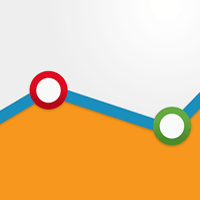3 Tips to Maximize ROI with Google Analytics

As a marketer or business owner, especially one that is looking to leverage online marketing channels, you must track your efforts effectively. Failing to do so will lead to wasted marketing & advertising expenditures and missed opportunities to generate sales. Google Analytics is a free but extremely powerful tool that every business should be using to collect data and refine strategies.
This data will help you to maximize ROI, but first you will need to setup your GA account correctly. Today we are going to cover a few simple steps you can take to start gathering useful data from your account.
1) Enable Goals Tracking
There are four primary types of goals that Google Analytics allows you to track.
URL Destination
Your brand's goal in this case is reached whenever the web page of your choice receives a hit. For instance, if you just created a new "Careers" page on your website and want to see more traffic driven to it, this could be your URL Destination goal, and it would be reached whenever a user visits the "Careers" page.
This goal is often used to track conversions as well. For example, if a user completes a form on your site and is then directed to a "thank you" page, setting up a goal to record visits to that URL will allow you to see how many times a form is completed. You can also see what traffic source lead to the conversion action.
Duration
This goal is a measure of how long users spend on your site once they get there. Set a time goal for this and see if the goal is being met. If it's not, you then could reevaluate and come up with ways you might be able to lengthen the time people take browsing your brand's website.
One good use for this goal could be a page containing a new guide or training video your company invested heavily into. If the video is 5 minutes long, you could set a goal for people who spend at least 5 minutes on the page. Similarly, if a new guide takes the average person 10 minutes to read, your goal could show you how many people are sticking around to read the entire page.
In either case, if you continually fall short of your goal, it is sign to re-evaluate the page for areas that can be improved.
Pages Per Visit
Unless you are a local service business (they grab your number and call you), you don't want your site's users to simply check out your homepage and then leave. In addition, if your page has a primary piece of content on a topic with supporting content that dives deeper into subcategories, you may want to see which supporting content is most interesting to readers of the main guide.
Another use for this is tracking the effectiveness of a sales funnel setup on your site. Let's say that your "funnel" is designed to take users from an informational post, to a sale page, ultimately to a thank you page.
Are users following the desired flow? How many never get past the informational page? What traffic sources lead to the most completed 3-step "funnel"? You can gather so much information from this simple goal setup.
Events
This goal will track actions, such as how many people watch a video that is on one of your pages, download a brochure, or click to open a larger view of an infographic. It is a way to track how a certain element within a page on your site is performing.
In addition, the button click tracking can also be used to track product sales whenever you do not have a unique thank you page for each completed sale. If your site offers 500 one-off products, click tracking could be the perfect way to find out what is selling and what traffic source is generating the most sales.
2) Set Up Traffic Segments
Traffic Segments are filters that allow you to group visitors of your site into smaller subcategories. Segmenting traffic will help you determine which channels are generating the most conversions, and which types of people are converting most often.
Here are just a few things you can segment traffic by:
- Operating System
- Traffic Source
- Country of Visitor
- Visitor Demographics
If you aren't familiar with traffic segments already, the guide linked above will help you in getting started.
3) Measure Performance of Your Offline Ads
When you produce a print advertisement for your business that will be featured somewhere like a newspaper or magazine, you will want the ad to feature a custom landing page, that speaks to your ideal prospect. The content of the landing page will vary by campaign, but make sure that the URL printed is one that is exclusive to the ad.
Many companies are even starting to use audience specific micro-websites for offline advertising. One such example is https://dadsdivorce.com. This site belongs to a divorce law firm, that runs marketing campaigns specifically for their informational site.
In the above example, setting up Google analytics on the micro-site will allow them to track traffic from their offline ads, while being able to review traffic from online sources as well. In addition, if they setup event tracking, they could see which links or buttons on the informational site lead to clicks to their many company website, and ultimately turn into leads.
Overall, Google Analytics is an extremely useful tool for evaluating the effectiveness of your marketing expenditures. If you are not leveraging a program like Google Analytics, you are leaving money on the table.









